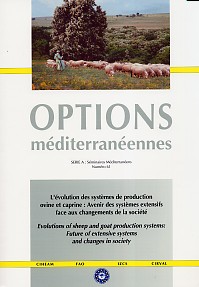| Article précédent | p. 49-55 | Article suivant |
Linear programming analysis of sheep and cashmere goat production systems
The paper discusses the economics of substituting some ranging sheep with cashmere goats, employing a linear programming model. Goats are more efficient than sheep in reducing pasture encroachment. A comprehensive shift from sheep to cashmere goats, is unprofitable, assuming equal labour input of goats and sheep. However, goats are smaller and require less feed, thus the labour input of goats may be lower. Due to the low fibre yield cashmere goats are not as profitable as sheep, even excluding subsidies for wool. The fibre yield could be improved by breeding or by feeding the kids until 20 months, making goats as profitable as sheep. The current agricultural support system treats sheep and goats alike. However, if Norway’s position in the ongoing World Trade Organization (WTO) negotiations to allow for extra payment for preserving the cultural landscape (multifunctional agriculture) gains sufficient support, extra compensation for browsers should become interesting to the government in implementing the policy.
- [ Afficher ]
- [ Télécharger ]
- [ Exporter la citation ]
Vous pouvez télécharger la citation au format :
- [ Imprimer ]
-
Mots-clés
CAPRIN, NORVEGE, OVIN, PROGRAMMATION LINEAIRE, SYSTEME D'EXPLOITATION AGRICOLECiter cet article
Asheim L.J., Eik L.O., Mysterud I. Linear programming analysis of sheep and cashmere goat production systems. In : Dubeuf J.-P. (ed.). L'évolution des systèmes de production ovine et caprine : avenir des systèmes extensifs face aux changements de la société . Zaragoza : CIHEAM, 2004. p. 49-55. (Options Méditerranéennes : Série A. Séminaires Méditerranéens; n. 61). Séminaire du Sous-Réseau Systèmes de Production du Réseau Coopératif Interrégional FAO-CIHEAM de Recherche et Développement sur les Ovins et les Caprins, 2002/04/04-06, Alghero (Italy). http://om.ciheam.org/om/pdf/a61/04600084.pdf



